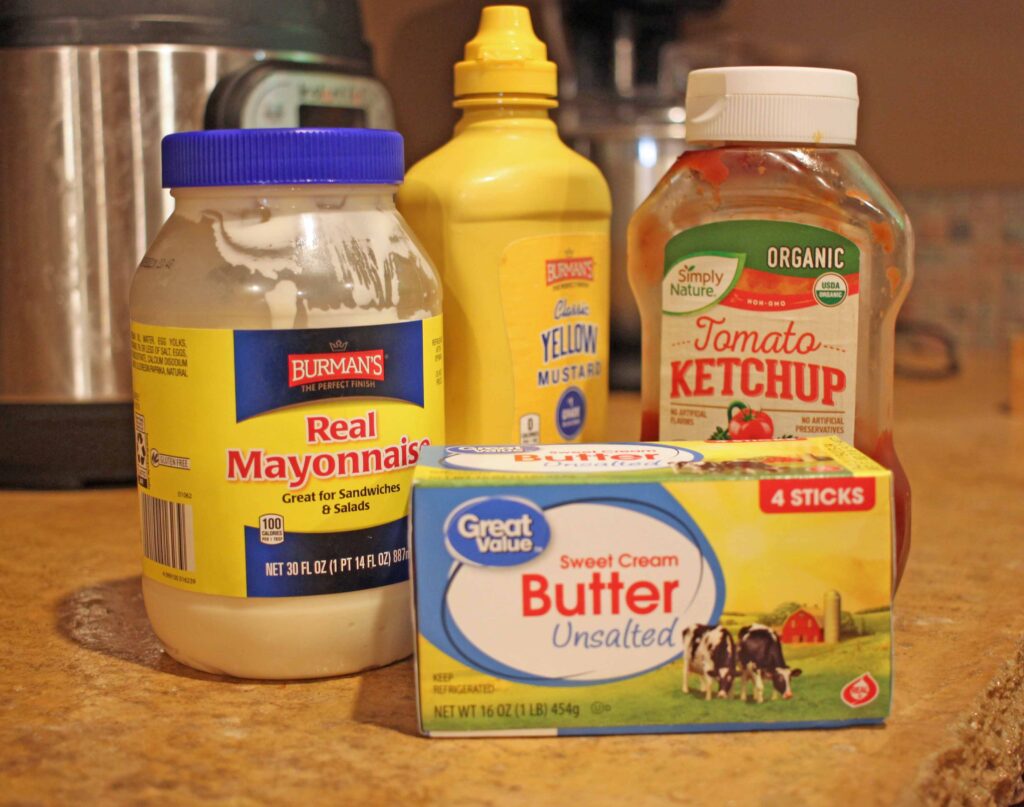These money saving tips for the kitchen will help free up some cash AND are kind to the environment. Who’s not looking for frugal and friendly?
We are all trying to squeeze a little more out of each paycheck, right? Let me help out a little with some simple reminders of habits that we’ve all heard of but tend to slip away from over time. Any one of these concepts can be tackled, perfected and expanded. So don’t get overwhelmed. Just start with one idea at a time.

1 – Shop from a list
You’ve heard the warning “Never buy groceries when you are hungry”, right? That’s because you end up buying everything that looks good and often you get home and have no idea what to cook for dinner. Well, the same is true for shopping without a plan. Start with making a menu for the week. The best way to begin is to look in your refrigerator, freezer and pantry to see what you already have on hand. Make a general list of ingredients and build your menu around those items. Make your grocery list from that menu and commit yourself to stick to it.
When my kids were little, they loved to man the list. The one sitting in the grocery cart held the list and checked the items off as we put them in the cart. In a way, I guess they were actually keeping me in check because if I strayed, they would say, “That’s not on the list!” Overall, it has proven to be a good habit for us all.

2 – Cook from scratch
Cooking from scratch was probably one of the most foreign concepts for me as a young adult. I grew up in the age of the convenience food extravaganza. Our pantry was filled with can soups, box meals, seasoning packets, and loads of junk food to keep a family of six filled. We were a family on the go, so my mom didn’t have a lot of time to spend in the kitchen. We didn’t know then what we know now about the chemicals and all of the sugar present in processed foods.
Today, though, we can make better choices. Not only will our bodies thank us, our wallets will as well. Cooking from scratch is actually quite liberating. A bag of flour, some oil, some sugar and eggs can be the building blocks of bread, cakes, cookies, pasta, pizza crust…Do you see what I mean? All it takes is a little time to explore some recipes, check out a food blog, watch a video or maybe even phone-a-friend.
I’ll admit, it can seem a little daunting at first. Recipes used to overwhelm me. Then, when I was living in a place that did not offer all of the convenience foods I was accustomed to, I was forced to try my hand at making homemade tortillas and brownies. It turns out, recipes are our friends! How cool is that?!

3 – Plan for outings
Another way we end up spending extra money on food that is probably not the best for us, is on fast food. We’ve all been pushed for time and errands take longer than expected so you end up hitting a drive through for a quick meal. If you are like my husband and I, you can pretty much count on being disappointed and feeling bloated afterwards. The only way to avoid this is simply by planning ahead and preparing a snack or meal to go. Not only does this save you money, but you’ll end up skipping out on the regrets.

4 – Look for store brands instead of name brand products
Many items on your grocery list can be filled with store brands instead of name brands. Often producers of name brand products also have contracts to produce the same item with other labels. So, you can possibly end up with the same item in a slightly different package, but with a lower price tag. This savings can often be close to 50%, so it’s definitely worth giving a store brand a try.

5 – Check out the price per unit
Sometimes we can be tricked into thinking that bigger is better when it comes to unit prices. However, that may not be the case. Doing a little math while in front of that shelf can save you a littler money.
When possible, also consider refillable items. Items like soap or cleaning products often come in concentrated solutions that you can dilute and add to a previously purchased container. This is usually more environmentally friendly, provided it really does create less waste. But you still have to consider the waste and consider the per unit price. In other words, think it through.
There you have it, the short list of simple steps to take on the journey to frugality starting in the kitchen. In a later post, I’ll share more ideas for practicing frugality in other parts of the house. Let’s not overwhelm ourselves. Just start with one idea and master that one before jumping into others. Slow and steady wins the race, right?
